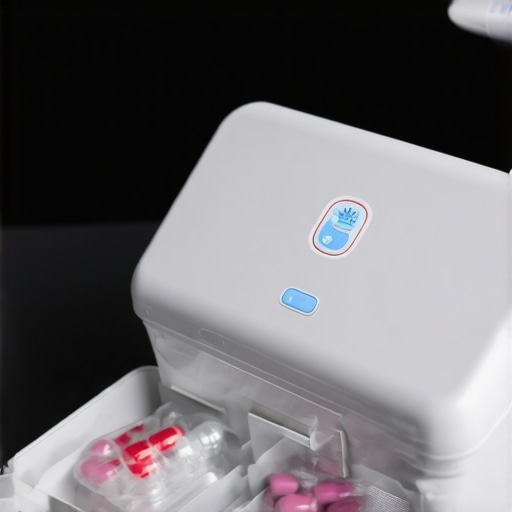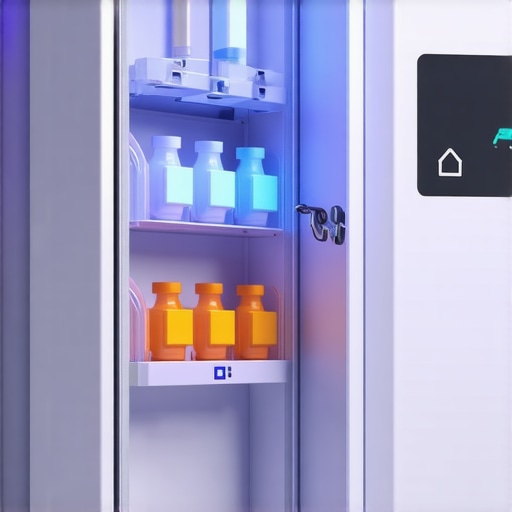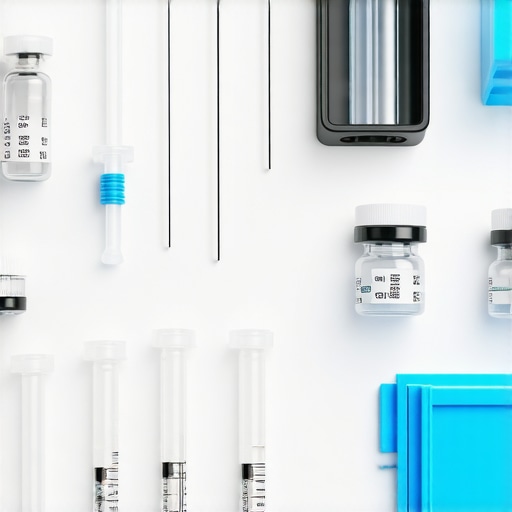Injecting Confidence: The Art of Properly Handling & Storing Your Prescribed Injections
Picture this: You’ve just received your prescription for a life-changing injectable medication, and suddenly, it feels like you’re entrusted with a tiny vial of magic. But hold on—before you become a self-proclaimed injection guru, let’s talk about the essentials of handling and storing these potent little miracles. Trust me, it’s not just about the needle; it’s about safeguarding your health, ensuring efficacy, and avoiding unnecessary mishaps.
The Cold, Hard Truth: Why Storage Matters More Than You Think
Ever wonder why your pharmacy gives you specific instructions on storing your medication? It’s simple—these injections are fragile little creatures that thrive under the right conditions. Improper storage can compromise their potency, rendering them less effective or even unsafe. Think of it like a delicate piece of art; mishandle it, and it loses its magic.
Are Your Storage Practices Up to Snuff?
First, always follow the manufacturer’s guidance. Most prescribed injections require refrigeration—usually between 2°C and 8°C (36°F and 46°F). But what if you’re traveling or don’t have fridge access? In such cases, consult your healthcare provider or pharmacist for solutions. Remember, extreme temperatures—hot or cold—can damage the medication, similar to how heat ruins chocolate.
Handling with Care: Your Daily Injection Ritual
Handling injections isn’t just about the jab; it’s about respecting the process. Always wash your hands thoroughly before handling your medication. Use a clean, flat surface and keep the vial or pen upright. If you’re using a vial, gently roll it between your palms—never shake—because agitation can create bubbles, leading to inaccurate dosing.
Could Your Technique Be Sabotaging Your Results?
It’s easy to rush through injections, but a steady hand and proper technique make all the difference. Rotate injection sites to prevent tissue damage and absorption issues. And always dispose of needles safely—nothing ruins your day like a needle-stick injury or accidental reuse. Think of it as respecting your body and those around you.
Safe Storage Tips: Your Cheat Sheet
- Refrigerate as recommended: Keep your injections cold but not frozen.
- Avoid temperature fluctuations: Protect from heat, cold, and direct sunlight.
- Use original packaging: It’s designed to shield your medication from light and temperature swings.
- Secure storage: Keep out of children’s and pets’ reach—think of it as your secret potion.
In Conclusion: Your Role as a Responsible Injector
Handling and storing your prescribed injections properly isn’t just a chore; it’s a vital part of your treatment journey. When in doubt, always consult your healthcare provider or trusted resources like the FDA for the latest safety guidelines. Remember, your health is your greatest asset—treat it with the respect it deserves.
Got tips or personal stories about injection handling? Share them in the comments below! And for more expert advice on safe injection practices, don’t hesitate to explore our related articles, like Mastering Prescription Injection Weight Loss.
Beyond the Basics: Elevating Your Injection Handling for Optimal Results
Handling and storing your weight loss injections correctly isn’t just about following rules—it’s a crucial step toward maximizing efficacy and maintaining safety throughout your journey. As experts emphasize, meticulous attention to these details can significantly influence your results, reduce side effects, and ensure your medication remains potent over time.
The Nuances of Proper Storage: More Than Just Cold Conditions
While refrigeration is the gold standard, understanding the subtleties of storage conditions can make a difference. For example, avoiding temperature fluctuations—such as leaving your medication in a hot car or exposing it to direct sunlight—preserves its integrity. A recent article by the FDA highlights how improper storage can lead to decreased effectiveness and increased risk of contamination. It’s worth investing in a dedicated medication storage container or a small cooler when traveling to maintain consistent temperature conditions.
Are Your Storage Habits Reflecting an Expert’s Precision?
Many users overlook the importance of original packaging, which is designed to shield injections from light and temperature swings. Additionally, keeping your medication out of reach from children and pets isn’t just about safety; it’s about respecting the delicate nature of these substances. For a comprehensive guide on storage best practices, consider visiting this resource.
Handling with Expertise: The Gentle Art of Injections
When it comes to injections, technique matters. Proper hand hygiene, rotating injection sites, and using sterile equipment are foundational. But what many don’t realize is how subtle adjustments in your technique can improve absorption and reduce discomfort. For instance, injecting at a 90-degree angle using the right needle size minimizes tissue trauma and enhances results. If discomfort persists, exploring tips for reducing injection pain can be beneficial—these are detailed in this comprehensive guide.
Could Small Technique Tweaks Lead to Big Results?
Absolutely. Consistency in site rotation prevents tissue damage, which could otherwise impair medication absorption. Additionally, proper disposal of needles is paramount—not only for safety but also to prevent infections or accidental injuries. Think of your injections as a delicate dance—precision, respect, and care are key.
Integrating Handling and Storage Into Your Long-Term Strategy
Expert-approved strategies involve more than individual practices; they encompass a holistic approach to your treatment plan. Regularly reviewing your storage and handling routines ensures you’re optimizing your medication’s potential. For example, incorporating routine checks for medication expiry dates and storage conditions can prevent compromised injections. To deepen your understanding of long-term management, visit this insightful article.
In the end, safe handling and storage are ongoing commitments that reflect your dedication to health and success. If you’re ever in doubt or want personalized advice, consulting your healthcare provider or trusted sources like the FDA can provide clarity. Remember, every detail counts in your journey towards sustainable weight loss.
Have you developed your own tips or routines for injection safety? Share your experiences in the comments! For tailored guidance, don’t hesitate to reach out to us.
Advanced Techniques for Ensuring Injection Potency: Beyond Basic Storage and Handling
When it comes to injectable medications, especially those used in weight management or chronic conditions, mastery over storage and handling extends far beyond the basics. As healthcare professionals and experienced patients know, subtle nuances can significantly impact drug stability, absorption, and ultimately, therapeutic outcomes. Let’s explore sophisticated strategies to elevate your injection practices to an expert level.
Understanding Molecular Stability: The Science Behind Proper Storage Conditions
At the molecular level, many injectable agents—such as peptide-based therapies—are sensitive to environmental factors. Temperature fluctuations can induce conformational changes, leading to aggregation or denaturation. According to a 2022 study published in Pharmaceutical Research, maintaining a consistent temperature within manufacturer-recommended ranges preserves molecular integrity, which is crucial for bioavailability. Utilizing temperature data loggers during storage and transport can help monitor conditions, especially during travel or long-term storage.
How Do Pharmacokinetics and Storage Interact?
Proper storage not only preserves the physical integrity of the medication but also ensures consistent pharmacokinetic profiles. Variability introduced by improper storage can lead to unpredictable absorption rates, affecting efficacy and side effect profiles. For instance, insulin exposed to heat may form fibrils, reducing its activity—a phenomenon documented extensively in diabetes research literature (source).
Innovative Storage Solutions for the Modern Patient
Traditional refrigeration remains the gold standard, but innovative solutions are emerging. Portable, smart medication cases equipped with temperature regulation and alerts can be game-changers for active lifestyles. For example, devices integrating Bluetooth technology enable real-time monitoring via smartphone apps, ensuring your medication remains within safe parameters. A 2023 review in Therapeutic Delivery highlights these advancements as pivotal in maintaining drug stability during travel or outdoor activities.

What Are the Best Practices for Maintaining Cold Chain Integrity?
Cold chain integrity involves meticulous planning and execution. Always verify the storage instructions provided by manufacturers, and consider supplemental measures like insulated carriers with phase-change materials, especially during long journeys. When using such carriers, ensure they are pre-conditioned to the required temperature range; this prevents temperature excursions that could compromise your medication. Regularly inspecting storage containers for damage or insulation breakdown is equally vital.
Handling Techniques That Maximize Absorption & Minimize Discomfort
Expert handling extends to injection technique itself. Precise control over needle angle, depth, and site rotation influences absorption kinetics and patient comfort. For example, injecting at a 45-degree angle in subcutaneous fat minimizes tissue trauma, especially in patients with variable adiposity. Furthermore, pre-warming the injection site with a warm compress can reduce discomfort and vasoconstriction, facilitating better absorption. Literature in anesthesiology supports the role of site warming in reducing pain perception (source).
Can Technique Modifications Significantly Improve Outcomes?
Absolutely. Small adjustments—such as selecting the optimal needle gauge, minimizing injection speed, and employing proper skin stabilization—can reduce tissue trauma, bleeding, and bruising. These factors directly influence drug absorption rates and patient adherence. Additionally, consistent site rotation prevents lipohypertrophy, which impairs consistent absorption, a concern highlighted in clinical endocrinology research.
Integrating Advanced Storage & Handling into Your Long-Term Regimen
To truly optimize your injection routine, develop a comprehensive system that combines environmental monitoring, proper technique, and patient education. Consider keeping a detailed log of storage conditions, injection sites, and any adverse reactions to identify patterns that can be refined over time. For healthcare providers, offering tailored advice based on patient lifestyle and environmental challenges can enhance adherence and outcomes. For a deeper dive into this holistic approach, visit ClinicalTrials.gov for ongoing studies on medication stability and handling innovations.
Remember, mastery in injection handling isn’t static; it evolves with emerging research and technological advances. Engage regularly with trusted sources such as the FDA and peer-reviewed journals to stay ahead of best practices. Your commitment to these details can markedly influence your health journey, leading to more predictable and sustainable results.
If you have experimented with novel storage solutions or handling techniques, share your insights in the comments. For personalized guidance, consult your healthcare provider or specialist in pharmaceutical sciences—your proactive approach is key to maximizing your therapy’s success.
Harnessing Molecular Science: How Precise Storage Conditions Affect Injection Efficacy
Delving deeper into the molecular stability of injectable medications reveals that even minor deviations from recommended storage temperatures can cause significant conformational changes, leading to reduced bioactivity. A 2022 study in Pharmaceutical Research emphasizes that maintaining strict temperature controls during storage and transport preserves the structural integrity of peptide-based therapies, ensuring consistent therapeutic effects. Employing temperature data loggers during transit is an advanced practice that health professionals and diligent patients alike can adopt to monitor conditions meticulously, especially when traveling with sensitive medications.
What Role Do Pharmacokinetics Play in Storage-Related Variability?
Pharmacokinetics—how a drug is absorbed, distributed, metabolized, and excreted—are profoundly influenced by storage conditions. For instance, insulin subjected to heat can form fibrils, impeding absorption and diminishing efficacy, as documented in diabetes research (source). Recognizing these interactions underscores the importance of impeccable storage practices for maintaining predictable drug performance and optimizing patient outcomes.
Innovative Storage Technologies: Elevating Patient Care
Emerging advances in storage solutions include smart, Bluetooth-enabled medication cases with real-time temperature monitoring and alerts. These devices offer unprecedented control, enabling patients to maintain the cold chain during outdoor activities or long journeys. A 2023 review in Therapeutic Delivery highlights that such smart systems not only enhance drug stability but also empower patients with data-driven management, reducing the risk of inadvertent temperature excursions that compromise medication quality.

How Can Cold Chain Integrity Be Ensured in Practical Settings?
To uphold cold chain integrity, it’s essential to pre-condition insulated carriers with phase-change materials matching the prescribed temperature range. Regular inspection of storage containers for insulation integrity and damage prevents unintentional temperature shifts. When traveling, using pre-conditioned carriers combined with real-time monitoring devices ensures consistent conditions, safeguarding medication efficacy throughout transit.
Refining Injection Technique for Superior Absorption and Comfort
Advanced injection techniques involve more than site rotation; they encompass precise control over needle gauge, angle, and depth. For example, injecting at a 45-degree angle in subcutaneous tissue minimizes trauma and enhances absorption. Pre-warming the injection site with a warm compress can significantly reduce discomfort and vasoconstriction, facilitating better drug uptake. Literature in anesthesiology supports site warming’s role in reducing injection pain (source).
Can Technique Modifications Lead to Quantifiable Improvements?
Indeed, subtle technique adjustments—such as selecting the optimal needle gauge and controlling injection speed—can diminish tissue trauma, bruising, and bleeding, directly impacting absorption rates. Proper skin stabilization prevents tissue distortion, ensuring consistent delivery and reducing discomfort. Regular site rotation prevents lipohypertrophy, which impairs absorption, as highlighted in clinical endocrinology research. These practices collectively improve the reliability of medication action and enhance patient adherence.
Integrating Advanced Handling & Storage into Long-Term Management
Creating a comprehensive system involves environmental monitoring, meticulous technique, and ongoing education. Keeping detailed logs of storage conditions, injection sites, and reactions helps identify patterns and optimize protocols. Healthcare providers can tailor advice based on patient lifestyles and environmental challenges, ensuring sustained efficacy. For a detailed exploration of long-term management strategies, visit this resource.
Mastery over injection handling and storage is an evolving discipline that benefits from continuous learning and adaptation. Regularly consult trusted sources such as the FDA and peer-reviewed studies to stay updated on best practices. Your dedication to these details directly influences the consistency and success of your treatment journey, fostering sustainable health improvements.
If you have experimented with innovative storage or handling solutions, share your insights and experiences in the comments below. For personalized guidance, don’t hesitate to reach out via our contact page.
Expert Insights & Advanced Considerations
1. Precision in Temperature Monitoring
Maintaining strict temperature controls during storage and transport is critical. Utilizing digital data loggers can help monitor conditions in real-time, ensuring medication potency is preserved.
2. Optimizing Injection Techniques
Small technical adjustments, such as using the appropriate needle gauge and injecting at the correct angle, can significantly enhance absorption and reduce discomfort, leading to better outcomes.
3. Integrating Smart Storage Solutions
Emerging technology like Bluetooth-enabled cases with alert systems helps prevent temperature excursions, especially during travel, safeguarding medication efficacy.
4. Site Rotation and Discomfort Reduction
Consistent rotation of injection sites prevents tissue damage and improves absorption. Pre-warming the injection area can also minimize pain and vasoconstriction, making injections more tolerable.
5. Long-term Routine Optimization
Regularly reviewing and adjusting your storage and handling routines, in consultation with healthcare professionals, ensures sustained medication efficacy and safety over time.
Curated Expert Resources
- FDA Guidelines: The official FDA website offers comprehensive, up-to-date safety protocols for medication storage and handling.
- Pharmaceutical Research Journal: Key studies on molecular stability and optimal storage conditions for injectable medications.
- Therapeutic Delivery Review: Innovations in smart medication storage solutions and their practical applications.
- ClinicalTrials.gov: Ongoing research on advanced handling techniques and technology integrations for medication safety.
- Peer-reviewed Journals in Pharmacology: In-depth analyses of pharmacokinetics impacted by storage and handling practices.
Final Expert Perspective
In the realm of injectable medication management, mastery over handling and storage elevates treatment efficacy and safety. As expert strategies reveal, integrating technological advancements, meticulous technique, and ongoing education forms the foundation for long-term success. Staying informed through authoritative sources like FDA and cutting-edge research is essential for healthcare providers and patients alike. Your proactive engagement not only maximizes therapeutic benefits but also exemplifies a commitment to excellence in health management. For those eager to deepen their expertise, exploring comprehensive guides on supervised injection practices can provide invaluable insights. Remember, the path to optimal health is paved with informed decisions and diligent care—embrace it with confidence.

